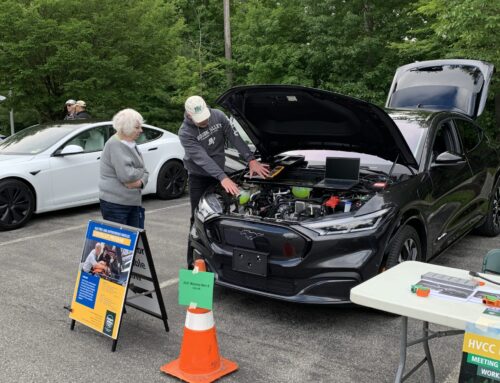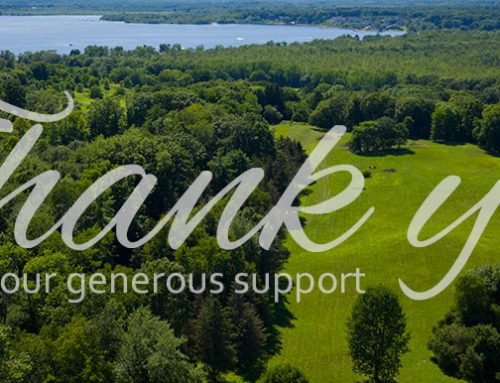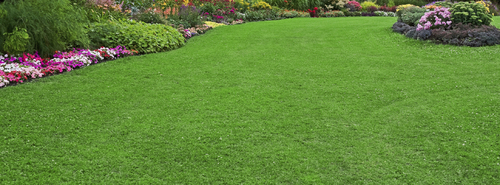
Ditch the turf and make your yard a greener place
Maybe you already know that turf grass lawns are bad for the environment. Maintaining turf grass requires mowing, watering, fertilizing and often the application of herbicides and insecticides. At best, traditional lawns don’t provide any support for native wildlife. At worst, the chemicals that wash out of them have an adverse impact on non-target insects, birds, and mammals. In some cases, humans are also affected as chemicals enter our neighborhoods, our drinking water, and our rivers, lakes, and oceans. But what can you do about it?
This fall, when it comes time to prepare your lawn for the following summer, try some alternative seeds, plants, and care methods to make your lawn more environmentally sound. As an added bonus, you’ll be able to spend more time enjoying your summer. Alternative lawns require less or no mowing, minimal weeding, no fertilization, no pesticides, and less to no watering once they are established.
The first step is easy. No matter how much or little turf you have, follow the advice of the Cornell Cooperative Extension for changing up your lawn care routine: Mowing higher and watering correctly gives you healthier grass and shades out weeds. Check out their advice on how to prevent disease while using fewer chemicals.
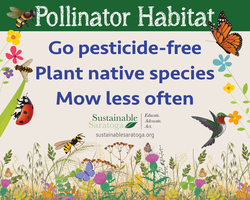
Whatever kind of lawn you have, we urge you to make a pledge to stop using pesticides. Most don’t discriminate between the pests they are meant to kill and the ones we want to keep around. They are destroying insect populations worldwide and harming wildlife along the entire food web. Biodiversity is only possible with a strong and diverse food web.
It’s not an all-or-nothing proposition. Change out a patch or two of grass next season and see how it goes. If you like it, you can expand it. Try different alternatives in different spots. Find something that will thrive in those spots where it’s always been hard to grow grass. Here are just a few fantastic alternatives:
Low growing fescues – Fescue grasses stay green all summer and require little mowing and less water than a traditional grass lawn. No Mow or Low Water seed mixes are available online from several sources.
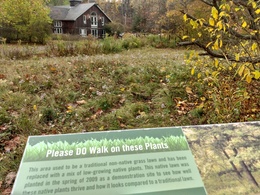
Cornell’s native lawn project
Native grass and plant lawn– Replace part or all of your lawn with native grasses and low growing native perennials and annuals that require minimal maintenance. For a real-life example, look at the Cornell Botanic Gardens Native Lawns project. See the list of species that thrive in our area on page 17.
Native flower beds – Bump out your flower beds a bit each year to gradually reduce lawn area. Replace grass with native flower species to promote biodiversity, and allow a cornucopia of insect pollinators and birds to thrive. There are three well established native nurseries in the region that can provide you with plants and advice, or even garden plans for your property: Wild Things Rescue Nursery, Catskill Native Nursery and Jessecology.
Clover and thyme – Gradually replace your lawn with low growing clovers and creeping thymes. While these plants are not native, they do have some food value for bees. Clover seed is easy to obtain from nurseries. It’s green and about the same height as grass lawns with almost no maintenance. Thyme lawns can be soft and smell wonderful if the plants are crushed underfoot.
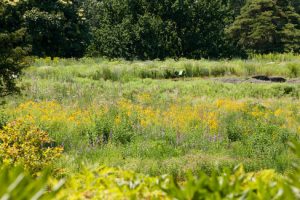
Attract wildlife to your yard with a meadow
Wildflower meadow – For an excellent example of how to convert a lawn to a wildflower meadow, see the University of New Hampshire’s Planting for Pollinators Fact Sheet. This is an aesthetic adjustment, but beautiful and rewarding. American Meadows has wildflower seed kits suitable for growing in the Northeast.
No Mow – Simply stop mowing and see what happens. Be ready to weed out invasive species as they appear (there are many apps to help identify native vs introduced species. Seek is particularly good for our region, as is iNaturalist). Eventually, native plants will grow in place of the grass. Many people who stop mowing most of their lawn still mow the edges of their former lawns to show that what they are doing is intentional.
Check your city ordinances or home owners’ association rules – if wild lawns are not permitted then work on getting those rules changed!
With all your free time not spent mowing, you could read books, grow a vegetable garden, get a master’s degree, play with your children, or start a movement in support of biodiversity. Enjoy the journey.




